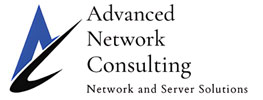From offers for prescription drugs, to mortgage refinancing, to sexually explicit content, spam can leave us having to sift through mounds of trash to find the few messages we actually care to read. Eliminating all junk e-mail may be impossible; however, there are a few steps than can be taken to all but eliminate spam from your inbox.
1. Protect Your E-mail Address
You wouldn’t give out your personal information to a stranger . .the same applies to your email address.
Many spam mailing lists are created by harvesting e-mail addresses from websites where your information may be displayed. Newsgroups, bulletin boards, and chat rooms are just a few examples of places where spammers may run scripts to collect anything that resembles an e-mail address. Many sites, such as bulletin boards, have safeguards to protect their members, but it does nothing if these members post their personal information in one of their posts, their signature, or somewhere else that puts the information in plain sight. Also, signing up with unknown sources for online contests, mailing lists, and similar occasions where you need to provide an address as part of the registration process may also expose your address to spammers. Using your best judgment is your best defense. If you want to keep your mailbox clean, keep your address private, only giving it out to trusted parties.
2. Create a Spam E-Mail Account
Protecting your e-mail address is easier said than done, and if you find that it is impossible to keep your personal e-mail address completely private, a separate account may be the solution. Referred to by some as a “throw-away” account, this e-mail account doesn’t have to cost you anything, as suitable e-mail accounts are available for free from places such as Hotmail and Yahoo.
This throw-away account is the best choice when you are unsure that your privacy will be protected. Advanced Network Consulting suggest using your “throw-away” account when registering with newsgroups, bulletin boards, sweepstakes, or in any other situation where you’re not quite sure your privacy will be protected. You just have to use your better judgment.
Simply delete this account if it becomes overrun with spam and create another “throw-away” account.
3. Message Rules in Outlook / Outlook Express
Most people use either Outlook or Outlook Express as their e-mail client, although some may not be familiar with creating message rules in the “Tools” drop down menu. Rules allow you to manually filter the delivery of e-mail, and can be created to analyze the sender’s name, subject line, and message body before processing. For example, a rule can be created so that any message with a particularly offensive word in the subject line is automatically moved to the Deleted Items folder, or ideally, just deleted from the server before download.
Another option provided by Outlook and Outlook Express allows the user to add senders to their “Blocked Senders” list. Whenever mail arrives from this sender in the future, it will skip the inbox and go straight to the Deleted Items folder.
Windows XP with Service Pack 2 provides even greater security in a variety of areas, including Outlook and Outlook Express. Many spam e-mails have images in the body that are coded to identify receipt of the e-mail. If the individually coded image has been viewed, the spammer knows that you have seen the e-mail, thus confirming your address as valid. With SP2, images are blocked to prevent your computer from being identified, thus keeping the spammer from confirming they have a valid address to continue mailing.
Additional information will be posted in another blog entry. If your company needs assistance now, feel free to call or email Advanced Network Consulting for a complimentary ONE HOUR network evaluation. Servicing Southern California with nearly 20 years of IT experience for small and medium size businesses, we assist companies by alleviating technology woes.

